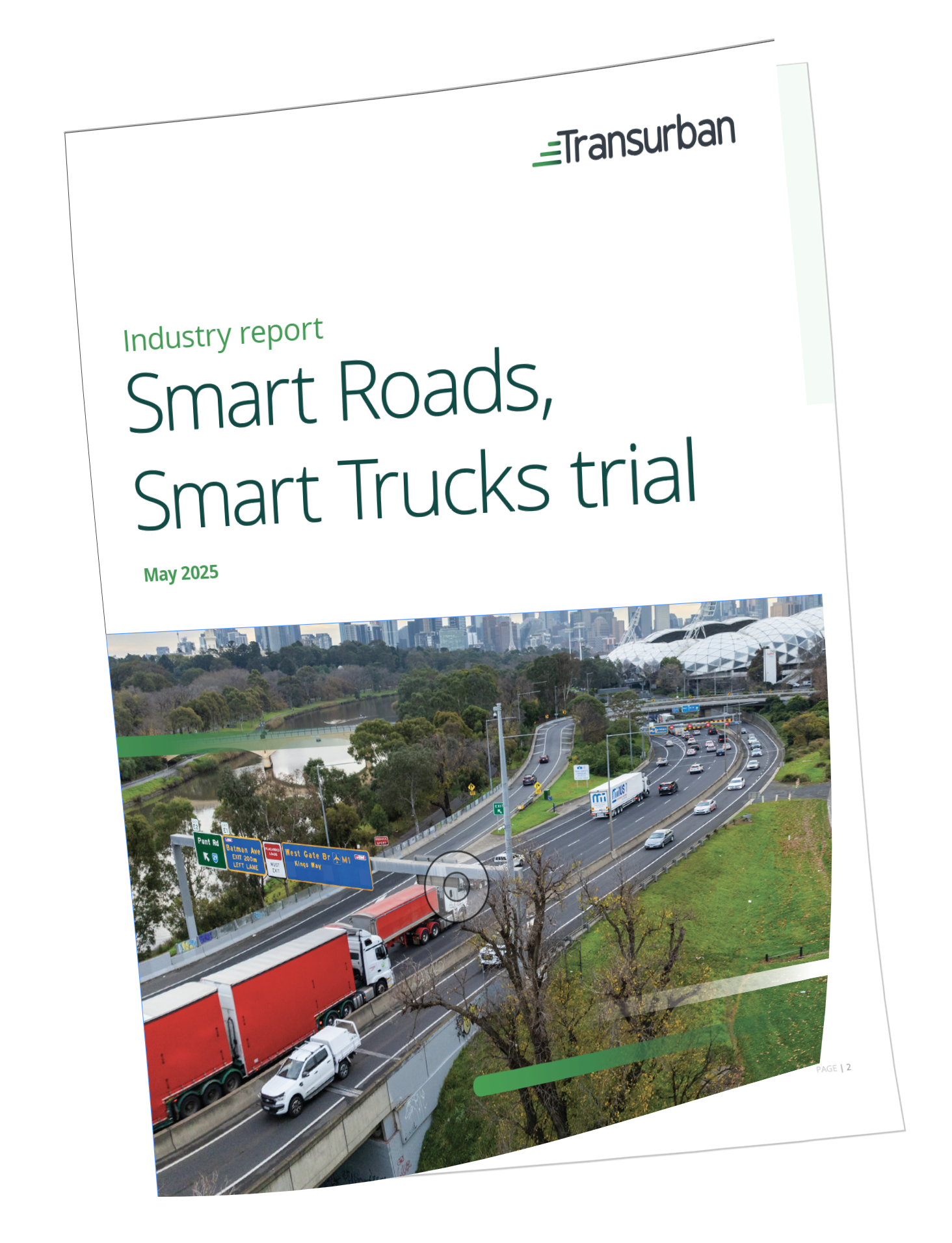Smart Roads, Smart Trucks trial
Our Smart Roads, Smart Trucks trial explored the role advanced road infrastructure technologies – or ‘smart road solutions’ – may have in improving safety, efficiency and productivity of autonomous (self-driving) trucks in the future. This 2024 trial built on Transurban’s previous connected and autonomous vehicle (CAV) trials, which have been focussed on identifying opportunities to improve safety and efficiency for everyone using our roads.
This trial explored the suitability of a 50km hub-to-hub route for future adoption of autonomous trucks, and investigated the potential role of smart road solutions to assist autonomous truck operations and performance across a range of scenarios and operating conditions.
Why autonomous trucks?
Demand for road freight is increasing, while the skilled truck driver workforce is decreasing – and the job itself has safety risks.
- Australian road freight is forecast to increase 77% between 2020–2050.
- The median age for truck drivers is 48, compared to 39 in other occupations.
- The risk of fatal injury for truck drivers is 13 times higher than other occupations.
Trial components

On-road data collection
The on-road trial was originally intended to include two trucks, each equipped with an automated driving system (ADS), operating in autonomous mode during overnight periods across an extended route, with qualified safety drivers supervising (and ready to take control) at all times. In response to stakeholder feedback, the on-road trial approach was adapted, with drivers always in control of the trucks and the ADS in shadow mode (operating in the background but not actually driving the trucks).
- Over 4,100 km of on-road ‘shadow mode’ data collected
- 50km end-to-end route along an urban freight corridor
- Smart road technology deployed along the route
- Real-time smart truck–smart road data exchange
- Level 4 automation capability tested (in shadow mode).

Simulations
Desk-top simulations complemented the on-road trial component. We used virtual models to test various scenarios and conditions at a scale we could not have achieved via on-road activity alone. The simulations leveraged Plus’s advanced simulation capabilities and enabled deeper analysis and comparison of autonomous truck performance with and without smart road data under a range of conditions.
- Blocked lane ahead, mimicking real-life situations such as crashes, broken down vehicles and lost loads.
- On-ramp merge to motorway, involving high-speed motorway traffic, an obstructed view and a relatively short merging distance
- Left turn (yield) and merge, via a complex intersection between a high-speed arterial and a local road.
Spotlight on simulations
Simulations demonstrated that smart-road data can provide earlier insights into conditions beyond the perception range of the vehicles’ onboard sensors. Providing these earlier insights enabled earlier decision making, which in turn optimised the automated driving system's efficiency and performance.
The following simulation examples demonstrate the effectiveness of smart road solutions in assisting autonomous driving decision making.
On-ramp merge
In this example, the truck merges onto a busy motorway with limited gaps. The smart road solution helps the truck find a gap and complete the merge when it would otherwise have been unable to do so.
Left turn (yield) and merge
In this example, the autonomous truck must make a left-hand turn onto a busy arterial. It shows how the smart road solution assists the truck in turning without having to first come to a complete stop at the intersection.
What we learned
Autonomous trucks have potential to help address some of the biggest challenges facing Australia’s road freight industry. Metropolitan motorways carrying repeatable freight tasks are likely to be well suited for initial adoption of autonomous technologies. Our trial demonstrated that while self-driving vehicle technology appears highly capable, smart road technology can have a valuable role to play.
The movement of container freight along the trial route seems well suited to autonomous trucks.
Results from the on-road trial component indicate autonomous trucks could safely handle the trial route and conditions without smart road solutions – however, trucks’ decision making can be enhanced when supported by additional data from smart roads.
Smart road solutions may assist autonomous truck decision making by providing advanced awareness of dynamic road and traffic conditions. Advanced awareness enables trucks to make earlier decisions, with potential safety, efficiency and performance benefits.
Constructive government and industry stakeholder collaboration, and building community acceptance and readiness, are both critical to unlocking the potential benefits of autonomous trucks.







